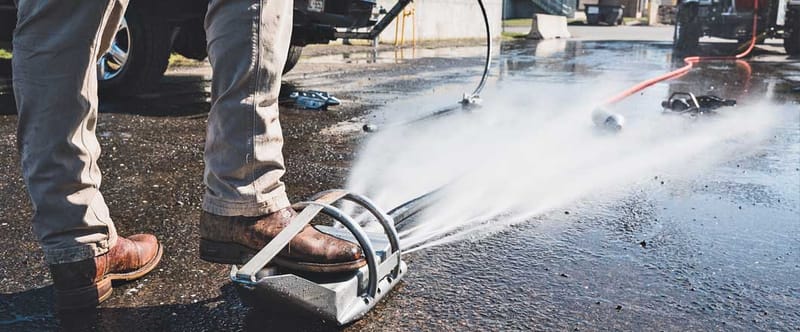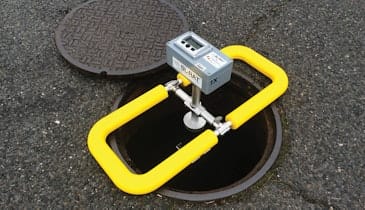A Closer Look into Sewer Cleaning Technology (Dynamic Maintenance Procedures)
Contents
- Disease Identification through Wastewater Monitoring
- SL-RAT-Based Acoustic Blockage Detection:
- Using Sensor-Equipped Maintenance Hole Covers to Prevent Flooding
- Persistent Investigation of Sewer Cleaning Technology:
- 1. Automated Cleaning Systems
- 2. Machine learning (ML) and artificial intelligence (AI)
- 3. Developments in Pipe Materials and Related Fields
The following illustrates how sewer maintenance procedures are changing, moving away from conventional methods and toward cutting-edge technological solutions. Let's examine the three technologies in more detail:

Disease Identification through Wastewater Monitoring
Company: Ginkgo Bioworks (Concentric)
Technology Concentric is a Ginkgo Bioworks subsidiary that specializes in biosecurity and public health. They provide mechanical equipment that is situated in wastewater treatmentfacilities. These instruments take regular samples in accordance with the amount of wastewater thatenters.

Benefits:
- Public Health Early Warning System: This technology serves as a public health early warning system for a number of pathogens, such as COVID-19, monkeypox, and polio. These tools can identify the presence of particular pathogens even before people exhibit symptoms by examining wastewater samples. In order to potentially stop the spread of outbreaks, this enables public health officials to implement early intervention strategies like targeted testing, isolation procedures, and vaccination campaigns.
- Wider Pathogen Detection: Concentric's technology can identify anomalies suggestive of pathogens that have not yet been identified, in contrast to conventional techniques that concentrate on particular pathogens. This enables preventative public health measures and offers insightful information about possible new threats.
- Data-Driven Decision Making: Trends and patterns in pathogen prevalence can be found by analyzing the gathered data. Public health officials can use this information to make data-driven decisions about vaccination schedules, resource allocation, and other interventions required to prevent future outbreaks.
Constraints:
- Deployment Stage: Concentric is a relatively new company, but its pilot programs have yielded encouraging results. It's crucial to remember that its widespread implementation in wastewater treatment facilities is still ongoing.
- Data Interpretation and Expertise: Knowledge in a variety of disciplines, including data science, microbiology, and public health, is necessary for analyzing the gathered data. Furthermore, cooperation amongst various stakeholders and a well-established infrastructure are necessary for analyzing the data and turning it into actionable insights.
SL-RAT-Based Acoustic Blockage Detection:
Device: InfoSense's SL-RAT
Technology: This compact device measures sewer pipe blockages using sound waves. It works by using a transmitter in one maintenance hole to send sound waves through the pipe, and a receiver in another nearby hole to pick up the waves.

Benefits:
- Water-saving and non-invasive: The SL-RAT is a non-invasive, water-saving alternative to traditional jet truck cleaning, which involves shooting water through the pipes to clear obstructions. This minimizes potential damage to the sewer system in addition to reducing water usage.
- Targeted Cleaning: Between the two maintenance holes in the pipe section, the SL-RAT can precisely locate any blockages. Instead of cleaning a section blindly, crews can concentrate their cleaning efforts on particular areas, saving time and resources.
- Cost-Effectiveness: The SL-RAT can drastically lower the total cost of sewer maintenance for municipalities by enabling targeted cleaning and optimizing resource allocation.
Constraints:
- Limited Range: The separation between the two maintenance holes determines how effective the SL-RAT is. The instrument may not be able to identify blockages farther down the line in circumstances where maintenance holes are spaced widely apart.
- Interpretation Expertise: Although the device is simple to use, it may take some training and expertise to properly interpret the sound data gathered by the SL-RAT and determine the kind and severity of blockages.
Using Sensor-Equipped Maintenance Hole Covers to Prevent Flooding
Organization: Xylem (previously EmNet)
Technology Xylem provides sensor-equipped maintenance hole covers that gather data in real-time on the temperature, velocity, depth, and flow rate of the sewer system. Moreover, automated control valves on these covers are available for controlling flow rates.

Benefits:
Preventive Flooding: These sensors facilitate preventive floods by giving real-time information on the flow levels in the sewer system. Authorities can take prompt action, such as deploying additional pumps or diverting overflow to designated storage tanks, by early detection of potential overflows.
Increased Maintenance Efficiency: Areas with recurrent blockages, infiltration (surface water entering the sewer system), and inflow (groundwater entering the sewer system) can be found using the data gathered. By enabling targeted maintenance and repairs, this data optimizes resource allocation and averts further problems.
Cost Savings: Sensor-equipped maintenance hole covers can help municipalities save a lot of money on flood damage, environmental fines, and infrastructure repairs by lowering the frequency and severity of overflows.
Constraints:
Infrastructure Expense: The integration of this technology necessitates a one-time expenditure for the acquisition and installation of covers equipped with sensors throughout the sewer system. Additionally, infrastructure development is needed to integrate the data collection and analysis system.
Data Security Issues: Because the technology depends on gathering and sending data in real-time, strong cybersecurity safeguards are required to keep private data safe from possible breaches.
Persistent Investigation of Sewer Cleaning Technology:
Beyond the three particular technologies listed in the preceding section, additional developments are changing the sewer cleaning industry:
1. Automated Cleaning Systems
Function: These are crawlers that can be controlled remotely. They have sensors, cameras, and cleaning tools. They make their way through sewer pipes, looking for possible problems, damage, and obstructions. They are also capable of doing cleaning duties like root and debris removal.
Advantages:
- Increased Safety: Prevents human workers from entering potentially dangerous small areas, such as sewer lines.
- Enhanced Efficiency: Compared to conventional methods, robots are more efficient at navigating intricate pipelines and carrying out cleaning duties.
- Improved Inspection Capabilities: Robotic cameras and sensors offer comprehensive data regarding the state of the sewage system, enabling proactive maintenance and repair scheduling.
2. Machine learning (ML) and artificial intelligence (AI)
Application: Sewer maintenance systems are progressively incorporating these technologies. In order to anticipate possible blockages and overflows, artificial intelligence (AI) algorithms can examine data gathered from a variety of sources, such as sensors, historical records, and weather forecasts.
Advantages:
- Predictive Maintenance: AI-enabled systems are able to forecast the location and timing of sewer issues, allowing for proactive maintenance and the avoidance of expensive breakdowns.
- Resource Allocation Optimization: AI can identify areas that need immediate attention and optimize the deployment of cleaning crews and resources by analyzing large amounts of data.
- Better Decision Making: Data-driven strategies for sewer network maintenance and upgrades can be formulated with the help of AI insights.
3. Developments in Pipe Materials and Related Fields
Usage: Stronger and more corrosion-resistant pipe materials are being developed for sewer systems through unstoppable research and ongoing development. Sewer infrastructure may become more useful and require less maintenance with the addition of these components.
Advantages:
- Lower Maintenance Expenses: Stronger pipes require fewer repairs and replacements over time, which can result in significant cost savings.
- Enhanced Ecological: When compared to traditional materials, these innovative materials often have smaller environmental footprints, which helps to build a more sustainable sewer infrastructure.
In conclusion, cutting-edge technologies are driving a dramatic transformation in the sewer cleaning industry. Improved efficiency, cost-effectiveness, environmental sustainability, and public health protection are just a few benefits of these advancements.
These technologies have the power to completely change how sewer systems are managed and maintained around the world as they develop and become more widely used.